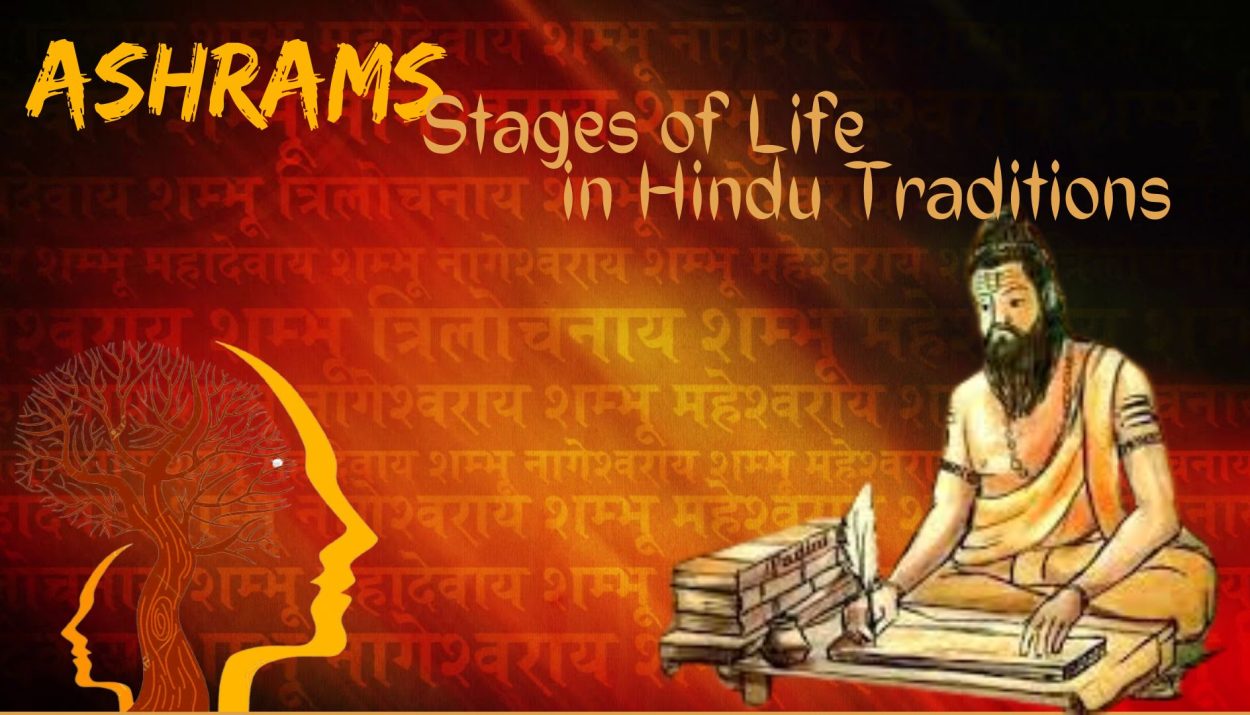Hinduism, one of the world’s oldest religions, encompasses a profound understanding of human life and its various stages. The concept of “Ashram” is an integral part of Hindu society, defining the four distinct stages of life that individuals pass through. Each stage carries its own set of responsibilities, duties and spiritual pursuits, fostering personal growth and societal harmony. “Ashrams: Stages of Life in Hindu Traditions” provides a comprehensive exploration of the four distinct phases individuals pass through in their life journey within the context of Hindu customs and beliefs.
In ancient Hindu society, the wise sages or saints known as Rishis formulated a profound concept that divided human life into four distinct stages. These four stages of life as per Hindu tradition are as follows-
- Brahmacharya Ashram
- Grihastha Ashram
- Vanaprastha Ashram
- Sanyasa Ashram
Brahmacharya Ashram (Student Stage)
The first stage of life in Hinduism is the Brahmacharya Ashram, which focuses on education, character-building and self-discipline. It typically begins with the initiation of formal education and extends until marriage. The initiation of the Brahmacharya Ashram is marked by a significant ceremony called the Upanayana Sanskara or the sacred thread ceremony. According to this tradition, complete celibacy is observed until marriage.
During this stage, individuals are expected to stay under the guidance of a Guru (teacher) and absorb knowledge from sacred texts like the Vedas, Upanishads and other scriptures. The principle to follow is to avoid pursuing pleasure, as it obstructs the path to gaining knowledge. To acquire knowledge, one must exert effort and refrain from indulging in pleasure trips or other distractions. The aim is to cultivate moral values, acquire knowledge and develop a strong foundation for the next stages of life.
Grihastha Ashram (Householder Stage)
The second stage, Grihastha Ashram, is when an individual takes on the responsibilities of building a family, raising children, pursuing a career and contributing to society. It is a stage of life where one embraces the duties and obligations of a householder. While it is true that individuals in this stage may find enjoyment in life’s pleasures, the primary focus is on fulfilling responsibilities and obligations towards their family, community and society. This entails managing household affairs, providing for the family’s needs, supporting elders and participating in social welfare activities.
The Grihastha stage is an essential part of the four Ashrams in Hindu society, promoting a balanced and harmonious way of life.
Vanaprastha Ashram (Retirement Stage)
The Vanaprastha Ashram marks the beginning of the retirement phase, typically around the age of 50 or when one’s children become self-sufficient. During this phase, the individual is expected to retire to the nearest forest, secluded place, ashram or pilgrimage site, embracing a life of meditation with minimal material needs. While the wife could accompany her husband, they must abstain from any sexual activity.
During this stage, individuals gradually withdraw from worldly attachments and responsibilities. They embark on a journey of self-reflection and spiritual contemplation. Vanaprastha Ashram allows one to transition from a busy family life to a more introspective and meditative existence.
It is important to note that Vanaprastha is not a complete detachment from the world, but rather a partial withdrawal to focus on spiritual contemplation and self-discovery.
Sanyasa Ashram (Renunciate Stage)
The final stage of the Ashram system is Sanyasa, where an individual renounces all worldly attachments and dedicates their life entirely to spiritual pursuits. Sanyasa is marked by complete detachment from material possessions, family ties and societal roles. Renunciates focus on attaining spiritual liberation (moksha) through meditation, contemplation and selfless service. They may wander as ascetics or reside in monastic communities, guiding others on the spiritual path.
Conclusion
The concept of the Ashram in Hindu society presents a profound and holistic framework for individual growth and societal well-being. Each stage of life has its own unique significance, guiding individuals to fulfil their worldly duties while progressing spiritually. The Ashram system fosters a sense of balance, purpose and continuity throughout a person’s life journey, encouraging them to evolve as responsible individuals contributing positively to their families and communities. Embracing the principles of the Ashram, Hindus find meaning, fulfilment and harmony in the diverse stages of their lives.
Also, read
The manufacturing process of magnets
